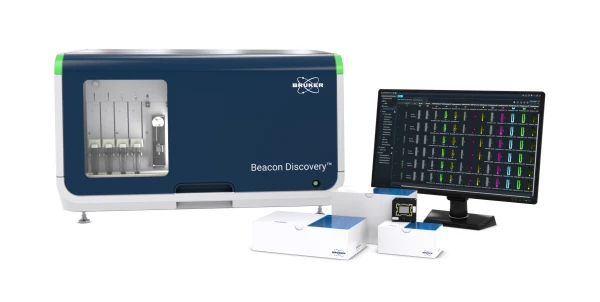The Latest Dedicated Cannabis Potency Testing and Profiling Systems
Legalization of cannabis in Canada and throughout a growing number of states in the US has led to the availability of many cannabinoid-containing products, such as dried flower, extracts, beverages, and a variety of edibles. Cannabinoid potency is a primary factor that determines the value of a product and its medical and/or recreational effects. Depending on state or provincial laws, each product must be tested and labeled according to a cannabinoid profile that describes composition and abundance, particularly the amounts of ∆9-tetrahydrocannabinol(THC) and cannabidiol (CBD).
Due to the ever-expanding menu of available cannabis products, and an overall lack of standardization in testing, the need for dedicated cannabinoid potency profiling technologies and methodologies has never been greater. The window of opportunity for cannabis-specific innovation has driven manufacturers to produce accessible technologies geared towards high-throughput, simplified workflows for accurate and efficient cannabis potency analysis. To complement the hardware and promote standardization, industry leaders have been developing entire suites of easy-to-implement cannabis-centric products. These solutions include reference standards, reagents and consumables kits, as well as intuitive, specialized reporting software.
Shimadzu Cannabis Analyzer for Potency (HPLC)
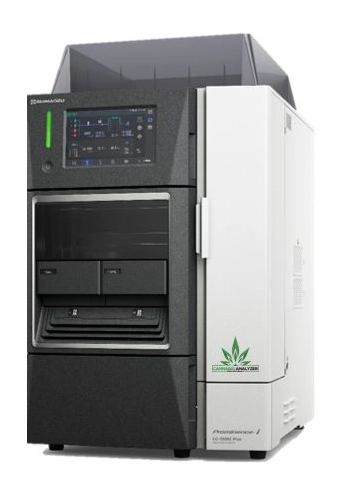
Shimadzu’s Cannabis Analyzer for Potency can be upgraded to detect between 10-21 Cannabinoids and is UHPLC-capable. Features include:
- Flexible method selection options featuring specified packages: High Throughput (10 cannabinoids in under 10 minutes), High Sensitivity (11 cannabinoids in 10 minutes), or High Resolution (16 cannabinoids, most suitable for research purposes)
- HPLC or UHPLC compatible, both available in either integrated (single machine) or modular format (stack of multiple, swappable devices)
- Integrated or Modular configurations - each offers a choice between two detectors, UV/Vis or Photodiode Array
- Recently developed new methods capable of quantifying 21 cannabinoids in flower and tinctures when using HPLC and LabSolutions software in combination with standard sets available from Shimadzu, Cayman, and Cerilliant (CBDV, THCV, CBD, CBG, CBDA, CBGA, CBN, Δ9-THC, Δ8-THC, CBC, THCA, Δ9-THCP, Δ8-THCA, CBDP, CBCO, CBCV, CBT, CBDVA, THCVA, CBL, CBCA)
Knauer Cannabis Profiler (HPLC)
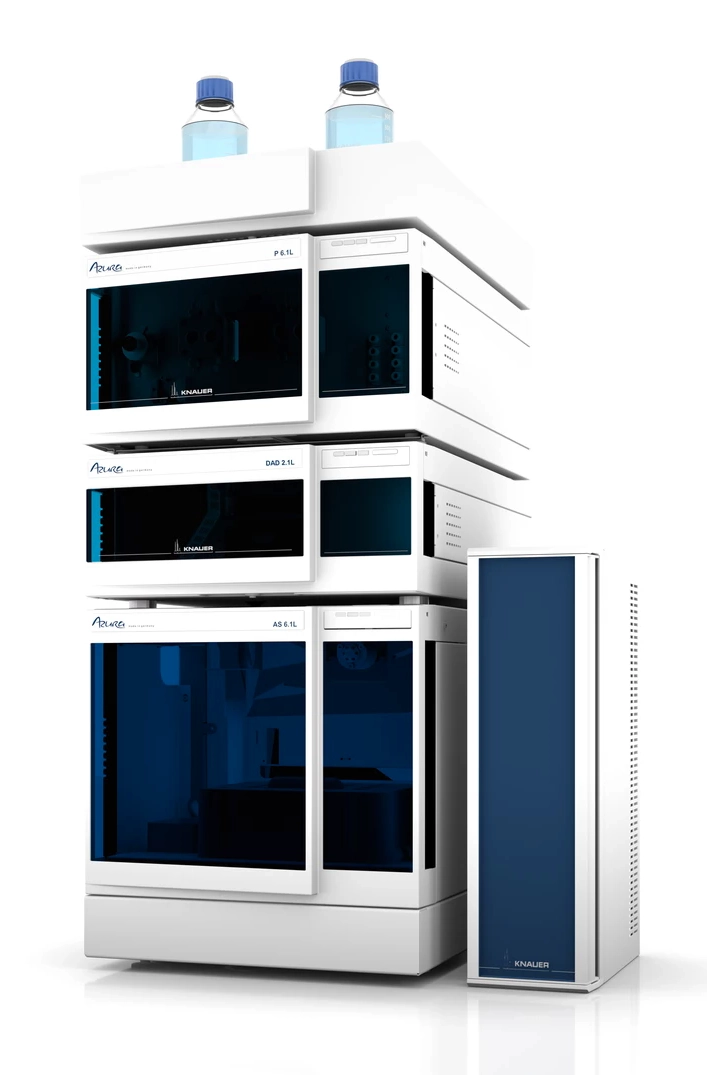
Features of the Knauer Cannabis Profiler include:
- Method- and column-optimized protocols for high-resolution 22-minute quantification of CBC, CBCA, CBDV, CBDVA, CBD, CBDA, CBG, CBGA, CBL, CBN, CBNA, Δ8-THC, Δ9-THC, Δ9-THCA, THCV, THCVA
- Cannabinoid quantification validated for AOAC compliance using three sample matrices: cannabis flower, CBD oil, and hemp seeds
- Bundled with intuitive ClarityChrom software for workstation data and analysis and autosampler control
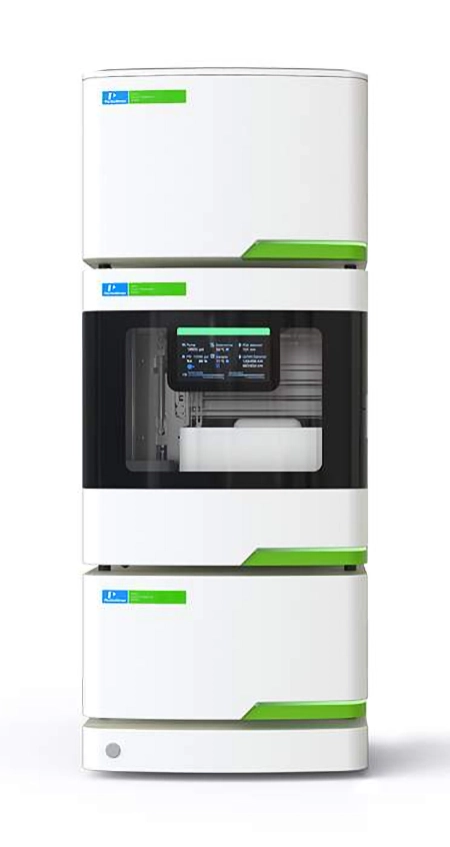 PerkinElmer LC 300 (HPLC or UHPLC)
and Spectrum Two N (FT-NIR)
PerkinElmer LC 300 (HPLC or UHPLC)
and Spectrum Two N (FT-NIR)
LC 300 HPLC/UHPLC reliably generates
profiles for 16 cannabinoids. Features include:
- Fast methods for high resolution of 16 cannabinoids in under seven minutes (Δ9-THC, Δ8-THC, CBD, CBDA, CBDV, CBDVA, CBN, CBNA, CBG, CBGA, CBC, CBCA, CBL, THCA, THCV, THCVA)
- Choice between five detector technologies that can be customized or upgraded depending upon analytical requirements: Photodiode Array, Multi-Wavelength, UV/Vis, Fluorescence, and Refractive Index
- Choice between HPLC (10K psi) or UHPLC (18K psi) pumps/autosamplers if faster separation speed is required with both options supporting diverse plate/tray types and sample volumes
- Integrated color display for real-time readouts and user-friendly SimplicityChrom CDS software for standard method reports, compliance, and auditing
(FT-NIR) provides
non-destructive cannabinoid snapshots with minimal sample prep or analyst
training. 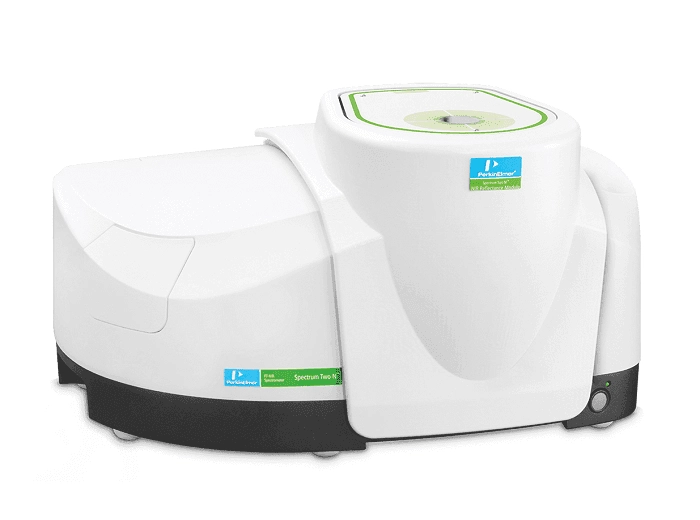 Features include:
Features include:
- Ultra quick method for determining total THC and total CBD by comparing milled cannabis flower to validated spectra data in Spectrum Standard software
- Near Infrared Reflectance Module (NIRM) reduces the issue of cannabis flower/plant heterogeneity by allowing rapid averaging of many samples
- No consumables or reagents are required
- Mobile design (small, 13 kg) though it requires DC power source (no battery pack option)
- USB, ethernet, and Wi-Fi communication options to quickly offload data for further analysis
Summary
Currently, there are multiple high-quality cannabinoid potency testing devices - using different technologies at varying price points - that are available to both experts and non-experts. Attractive qualities of these systems include the built-in analytical methods that avoid the need for potentially frustrating and costly methods development processes. A wide range of technical resources and support are available as well, in the case of hardware or software issues. Ultimately, the key points when deciding upon new technology are budgetary concerns, the required throughput, analyst experience level, and the needs of specific cannabinoid testing lab locations and performance requirements.
